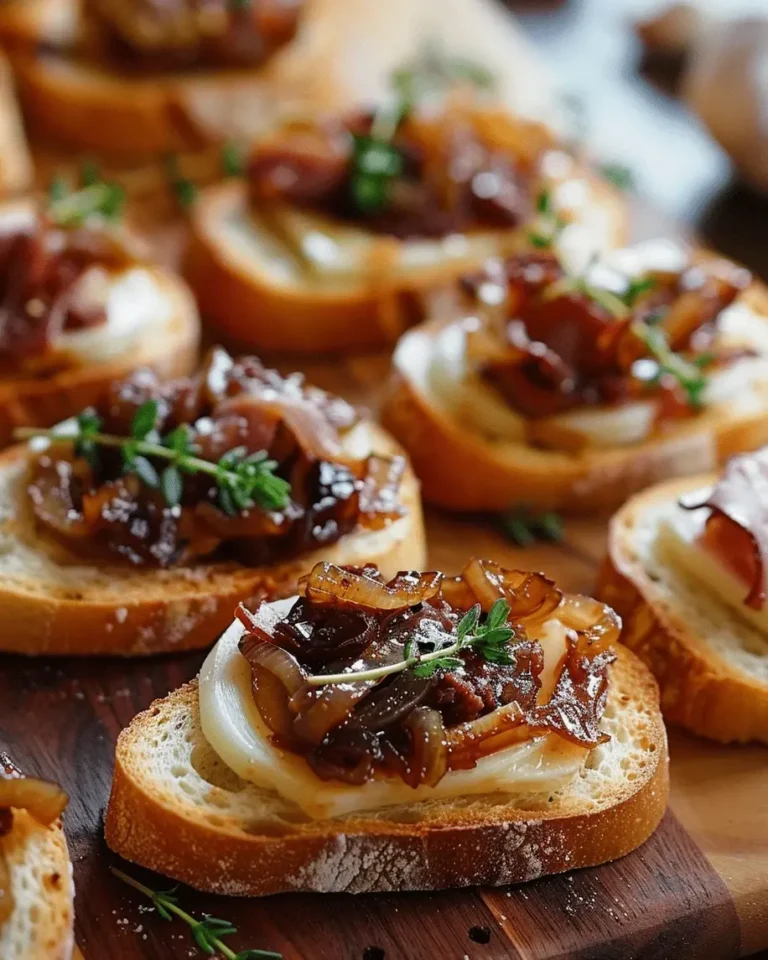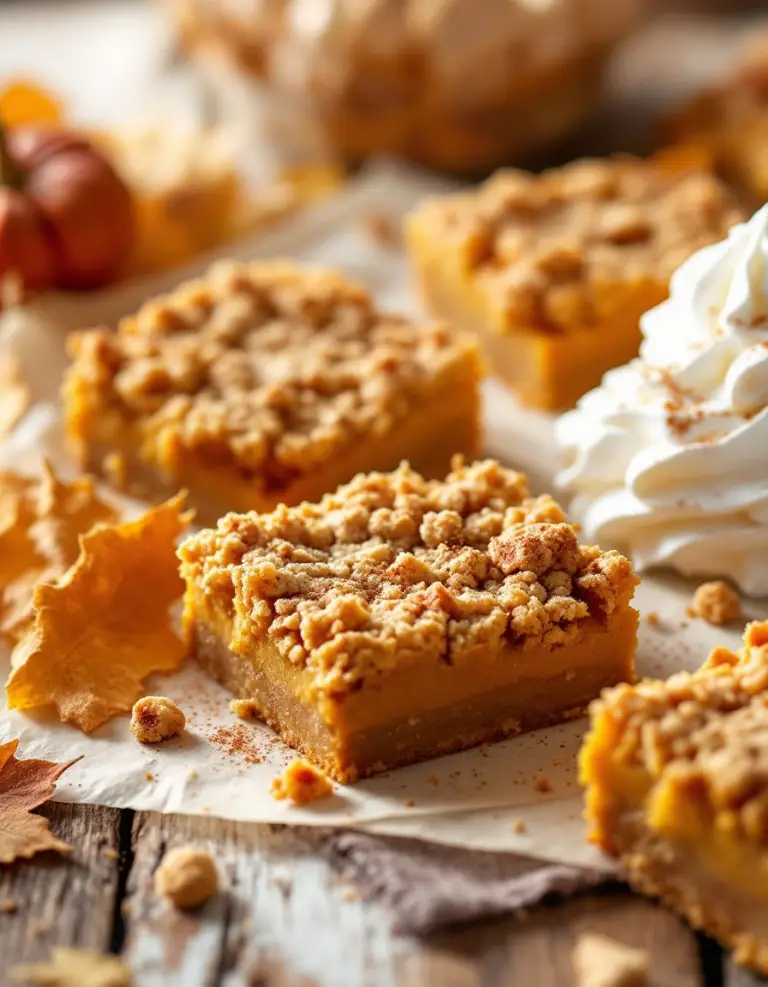Delightful Fruity Cinnamon Rolls: A Sweet Morning Treat

Delicious Cinnamon Rolls with a Fruity Twist: Wake Up to Sweet Bliss!
Who’s ready to wake up to the sweet aroma of freshly baked cinnamon rolls with a fruity twist? Imagine pulling a tray of warm, gooey rolls out of the oven, their golden brown tops shining with a luscious glaze. These delightful cinnamon rolls not only offer the classic flavors but are also elevated by the addition of fresh fruits like blueberries or raspberries, making them a perfect breakfast treat. The combination of spices with fruity notes creates an irresistible breakfast or brunch item that family and friends will adore.
The journey to making these cinnamon rolls is not just about baking; it’s about creating a warm and inviting experience that brings people together. Picture lazy Sunday mornings spent with loved ones, enjoying the soft, fluffy texture of these rolls, as you sip your favorite beverage. Whether you’re serving them at a holiday brunch or just on a regular weekday morning, these cinnamon rolls are sure to brighten anyone’s day.
Quick Recipe Highlights
- Flavor Profile: Sweet cinnamon meets the tartness of fresh fruits, creating a perfect balance of flavors that dance on your palate.
- Texture: Soft, fluffy dough wrapped around a gooey filling, offering a delightful chew with every bite.
- Aroma: The heavenly scent of cinnamon wafting through your kitchen mingles perfectly with the sweet smell of baked fruit.
- Visual Appeal: Golden-brown rolls generously drizzled with glaze and speckled with colorful fruit make for an inviting presentation.
- Skill Level Needed: This recipe requires some basic baking skills and a bit of patience, but is manageable for beginners.
- Special Equipment: You’ll need a mixing bowl, rolling pin, baking sheet, and a kitchen thermometer for best results.
Recipe Overview
- Difficulty Level: Rated moderate, this recipe involves preparing dough, allowing it to rise, and rolling it out correctly for the best results.
- Category: Ideal for breakfast or brunch, these rolls are a great choice for family gatherings or weekend treats.
- Cuisine: Drawing inspiration from classic American and European baking traditions, cinnamon rolls are beloved worldwide.
- Cost: Reasonably priced, this recipe uses common ingredients making it affordable for most households.
- Season: Perfect for any season, but they’re especially cherished in the fall and winter during festive occasions.
- Occasion: Serve them at brunches, holiday breakfasts, or even as a sweet snack during gatherings.
Why You’ll Love This Recipe
The taste and texture appeal of these cinnamon rolls is undeniable. The soft, pillowy dough perfectly contrasts with the gooey filling, packed with cinnamon and sugar, complemented by the juicy burst of fresh fruit. Every bite is a harmonious blend that warms the heart and satisfies the sweet tooth.
Convenience is another reason this recipe shines. While the dough requires some time to rise, the process can easily be scheduled around your morning routine. Prepare the rolls the night before, refrigerate them, and simply bake them in the morning for a fresh, homemade breakfast without the early morning hustle.
Nutritionally, these cinnamon rolls provide a source of energy to kickstart your day. By incorporating fresh fruit, you’re not only adding flavor but also beneficial vitamins and antioxidants that enhance the overall nutritional profile.
Socially, these rolls are a wonderful addition to any table. They bring people together, inviting everyone to share and indulge in a warm treat that sparks joy and conversation. Baking these rolls creates a sense of community, whether you’re sharing them with family or friends.
Finally, the cost-effectiveness of this recipe can’t be overlooked. With simple ingredients that you may already have in your pantry, you can create a delightful treat that feels gourmet without breaking the bank.
Historical Background and Cultural Significance
The origin of cinnamon rolls dates back to ancient times, with cinnamon being prized for its flavor and medicinal properties in various cultures, including those in Asia and the Middle East. Over centuries, recipes have evolved, and the cinnamon roll has become a staple in many Western countries, especially in Scandinavia, where it is known as “kanelbullar.”
Culturally, cinnamon rolls hold significance in many celebrations and are often a part of traditional breakfast spreads. Their sweet, comforting flavors make them a go-to choice for festive occasions, particularly around holidays like Christmas and Easter.
Throughout time, the evolution of the cinnamon roll has led to countless variations, from simple butter and sugar rolls to elaborate versions filled with cream cheese and assorted fruits. Each iteration reflects regional tastes and available ingredients, making them a versatile dish enjoyed by many.
In different parts of the world, you’ll find regional variations that highlight local flavors and ingredients, such as raisins or nuts, showcasing how this beloved treat can bridge cultural divides through its warm and inviting nature.
Ingredient Deep Dive
The first main ingredient, cinnamon, is deeply woven into the fabric of culinary history. Known as the “spice of kings,” cinnamon has been used for thousands of years not only for its unique taste but also for its health benefits, including anti-inflammatory properties and rich antioxidants. When selecting cinnamon for this recipe, opt for Ceylon cinnamon for its subtle sweetness or stick with the common Cassia variety for its stronger flavor.
Flour is another vital component in cinnamon rolls, providing the structure and elasticity needed in the dough. Whole wheat flour is a nutritious alternative that can add a nutty flavor and increase fiber content, making your rolls more wholesome. When choosing flour, make sure to look for a brand that has a good protein content for the best results.
Another key ingredient is the fresh fruit; common choices include blueberries, raspberries, or chopped apples. These fruits not only add natural sweetness but also provide vitamins and nutrients. Fresh fruits should be firm and ripe. If fresh fruit is unavailable, frozen options can be used, but be sure to thaw and drain them beforehand to avoid excess moisture in the rolls.
Lastly, sugar is essential for both sweetness and aiding the browning process during baking. You can choose organic or brown sugar to enhance the flavor profile, as these options carry a more complex sweetness compared to regular white sugar. Be mindful of the granule size, as small grains dissolve more easily into the dough.
Common Mistakes to Avoid
- Overworking the dough: Over-kneading can lead to tough rolls. Mix until just combined and then knead gently.
- Incorrect temperature: Ensure your liquids are warm but not hot; too hot can kill the yeast, and too cold won’t activate it.
- Not allowing the dough to rise: Give enough time for your dough to double in size; rushing this step will impact texture.
- Using old yeast: Always check the expiration date on your yeast for optimal rise. Fresh yeast means fluffy rolls.
- Overfilling the rolls: Avoid overstuffing your cinnamon rolls, as this can cause overflowing and uneven baking.
- Skipping the glaze: A delicious cream cheese glaze adds moisture and flavor; don’t skip this key finishing touch.
- Not using parchment paper: Parchment paper prevents sticking and makes cleanup easier; don’t skip this step!
- Ignoring the oven temperature: Always preheat your oven to ensure even baking and perfect results.
Essential Techniques
Understanding the importance of proofing is key to achieving soft, fluffy rolls. This process allows yeast to activate and bubbles to form, giving your dough that much-needed lift. To master this, consider finding a warm, draft-free area for your dough to rise, as temperature significantly affects yeast activity.
Rolling out the dough evenly is crucial for uniform baking. Begin by flouring your work surface and using your rolling pin to ensure the dough is about 1/4 inch thick. Pay attention to the corners, as uneven rolling can lead to oddly shaped rolls that may not cook evenly.
Knowing when your rolls are perfectly baked is also essential. The golden-brown color and a slight internal temperature of around 190°F indicate readiness. Use a kitchen thermometer to check for the perfect bake without overdoing it.
Finally, mastering the art of glazing can elevate your cinnamon rolls from good to great. Drizzling a cream cheese or vanilla glaze over warm rolls enhances their sweetness and adds an appealing finish. Remember, a little glaze goes a long way!
Pro Tips for Perfect Cinnamon Rolls
1. Use room temperature ingredients, especially butter and eggs, for smoother mixing and a more cohesive dough.
2. If the dough feels too sticky, add small amounts of flour until the desired consistency is achieved; avoid adding too much at once.
3. Let your rolled dough rest for about 10 minutes before cutting; this relaxes the gluten and makes slicing easier.
4. For a stronger cinnamon flavor, experiment with adding a pinch of nutmeg or cardamom to the filling.
5. Bake the rolls in a glass dish for even cooking, as it’s less likely to cause hot spots compared to metal pans.
6. Consider brushing the tops of the rolls with melted butter before baking for a rich, golden finish.
7. Experiment with different types of fruit fillings to create unique flavor profiles tailored to your taste.
8. If using frozen fruit, be sure to thaw and drain it well to prevent excess moisture in the rolls.
Variations and Adaptations
Regional variations can infuse your cinnamon rolls with global flavors—consider adding matcha for an Asian twist or cocoa powder for a chocolate variation. Seasonal adaptations can utilize pumpkin puree in fall or fresh strawberries in summer, creating rolls that reflect the bounty of the seasons.
For those with dietary restrictions, gluten-free flour can be substituted to make the rolls suitable for gluten-sensitive individuals. Vegan alternatives using coconut oil and almond milk can also yield delicious, soft rolls without dairy.
Creative flavor variations can include different spices or extracts, like almond or vanilla, to enhance the filling. For texture modifications, adding nuts or seeds can provide a delightful crunch alongside the soft dough.
Finally, consider presentation alternatives, such as baking in individual ramekins for a cute personal touch or rolling the dough into different shapes for an eye-catching display.
Serving and Presentation Guide
When plating your cinnamon rolls, consider using a large, round serving platter to create an inviting centerpiece. Sprinkle some fresh fruit or nuts on top for an added pop of color. Garnishing with a dusting of powdered sugar or a drizzle of glaze right before serving enhances visual appeal and adds a final sweet touch.
Traditional accompaniments for cinnamon rolls include coffee or tea, which complement the sweetness beautifully. If you’re feeling adventurous, serve them with a dollop of whipped cream or a side of yogurt for a delicious contrast.
Serving temperature can enhance enjoyment; cinnamon rolls are best served warm but can also be delightful at room temperature. Portion control is vital, so offer various roll sizes, allowing guests to choose their favorite without feeling overwhelmed.
Wine and Beverage Pairing
Wine pairings for cinnamon rolls can be quite delightful. A sweet Riesling or Moscato fits well, complementing the sweetness of the rolls while providing a refreshing contrast. For something bolder, a light, fruity red, like a Pinot Noir, pairs nicely with the cinnamon flavor.
For non-alcoholic options, consider sparkling cider or herbal teas, such as chamomile or peppermint, which can balance out the sweetness without overpowering the palate.
Coffee and tea are classic pairings, with a light roast coffee enhancing the cinnamon flavor from the rolls. Ensure the beverage is served hot to maintain an inviting atmosphere.
Temperature considerations are important—serve wine chilled and coffee fresh-brewed to optimize their flavor alongside the warm cinnamon rolls.
Storage and Shelf Life
Proper storage of cinnamon rolls can prolong their freshness. Store completely cooled rolls in an airtight container at room temperature for up to three days. For longer storage, consider placing them in the fridge, where they can last up to a week. Always allow them to cool completely before sealing to avoid moisture buildup, which can lead to sogginess.
For freezing, wrap individual rolls tightly in plastic wrap and place them in a freezer-safe bag or container. This method keeps them fresh for up to two months. When reheating, simply remove from the freezer and thaw overnight in the fridge before warming in the oven or microwave.
Signs of spoilage include an off smell or visible mold. Always check before consuming; if in doubt, it’s safer to discard and enjoy fresh rolls with the next batch.
Make Ahead Strategies
To make your life easier, consider preparing the dough the night before. After mixing and kneading, place it in a greased bowl, cover it, and let it rise overnight in the refrigerator. In the morning, simply roll out the dough, fill, and bake!
You can also prepare the rolls up to the point of baking, then cover and refrigerate them for up to 24 hours. Before baking, let the rolls sit at room temperature for about 30 minutes to rise slightly.
Quality impacts can also be minimized by preparing the glaze in advance. Store it in an airtight container in the fridge and warm it slightly before drizzling over fresh baked rolls. Fresh ingredients like fruit can be added just before serving for optimum flavor.
Scaling Instructions
For those looking to adjust the recipe size, halving the ingredients is straightforward, and still yields delicious cinnamon rolls. Always use a smaller baking dish to avoid thinner rolls that won’t bake evenly.
Doubling or tripling the recipe can be done easily; simply multiply the ingredients by your desired amount. When scaling up, consider your oven space and bake in batches if necessary.
Equipment adjustments may include using larger mixing bowls and baking sheets to accommodate the increased volume of dough and filling. Timing modifications are also essential; keep an eye on baking times as larger amounts may require slight adjustments.
Storage considerations should also be taken into account—ensure your storage space is adequate to handle increased quantities while maintaining freshness.
Nutritional Deep Dive
A macro breakdown of one cinnamon roll highlights its carbohydrate content as a primary energy source, with modest protein levels primarily from the flour and milk used in making the dough.
In terms of micronutrients, the addition of fruits boosts vitamin C and dietary fiber, offering heart health benefits and aiding digestion. The combination of ingredients helps in giving a number of vital nutrients that support overall health.
Health benefits of cinnamon, such as its antioxidant properties and potential blood sugar regulation, make these rolls a treat worth considering. While they do contain sugar, balance is essential; enjoy these treats as part of a varied diet.
For dietary considerations, be mindful of portion sizes. One roll is often sufficient to satisfy a sweet craving without excessive calorie intake; moderation is key in all indulgences.
If weight management is a goal, incorporating these cinnamon rolls into your diet once a week, while opting for healthy sides like yogurt or fresh fruit, can maintain enjoyment without undermining progress.
Dietary Adaptations
For gluten-free adaptations, using a one-to-one baking mix can yield a similar texture while accommodating dietary restrictions. Make sure to adjust rising times as gluten-free flours might behave differently.
Dairy-free substitutions can include almond milk and coconut oil instead of cow’s milk and butter. These swaps still provide delicious results without lactose.
For vegan rolls, consider using flax eggs in place of traditional eggs, along with plant-based butter, to ensure the recipe remains animal product-free.
Low-carb and keto versions can utilize almond flour or coconut flour, along with sugar substitutes like erythritol, to decrease carbohydrate levels significantly.
Paleo modifications focus on whole, unprocessed ingredients. Use almond flour for dough and natural sweeteners like honey or maple syrup in moderation to maintain paleo standards.
Low-FODMAP adaptations require careful selection of ingredients, avoiding high-FODMAP fillings like certain dried fruits or sweeteners for those sensitive to fermentable carbs.
Troubleshooting Guide
Texture issues can arise, often due to over-kneading or insufficient rising time. Aim for a soft, pliable dough without large air bubbles for the best texture in baked rolls.
Flavor balance may become off if the wrong amount of cinnamon is used. Always measure spices carefully to avoid overwhelming sweetness or bitterness.
Temperature problems, such as rolls becoming too dry, can be avoided by checking your oven’s actual temperature with a thermometer, ensuring even baking without overheating.
Equipment challenges can stem from the use of improper-sized pans. Ensure you are using the right size baking dish to avoid uneven cooking.
Ingredient substitutions can sometimes yield unexpected results. For example, using active dry yeast instead of instant yeast can lead to longer rising times, so plan accordingly.
Timing concerns are also critical; always ensure to adjust for ingredient modifications and monitor baking times closely, especially when scaling the recipe.
Recipe Success Stories
Our community of home bakers has shared countless success stories, ranging from unique variations to sharing their rolled delights with family and friends. Many have highlighted the ease of adaptation in flavors as their favorite part of the recipe, creating personalized rolls for various occasions.
Feedback often includes tips for baking in different environmental conditions, such as humidity, and how adjusting the rising time led to incredible results.
Photography tips shared among community members illustrate that plating and garnishing dramatically improve presentation, encouraging more people to showcase their baking successes on social media.
Reader suggestions have led to new flavor combinations, turning these cinnamon rolls into an ongoing exploration of tastes and textures that invite experimentation in the kitchen.
Frequently Asked Questions
How do I know when my dough has risen enough?
To check if the dough has risen sufficiently, it should be roughly doubled in size. You can perform the “poke test”: gently press your finger into the dough; if the indentation remains, the dough is ready. If it springs back, it needs more time to rise.
Can I use active dry yeast instead of instant yeast?
Yes, you can use active dry yeast, but it requires proofing in warm water with sugar before mixing it into the dough. Instant yeast can be mixed directly with dry ingredients, making it a more convenient option.
What is the best way to store leftover cinnamon rolls?
Leftover cinnamon rolls should be stored in an airtight container at room temperature for up to three days or in the fridge for up to a week. For longer storage, wrap them tightly and freeze for up to two months.
Can I freeze cinnamon rolls before baking?
Absolutely! Prepare the rolls and place them in a greased pan, cover, and freeze before allowing them to rise. When you’re ready to bake, pull them out, let them rise and bake as directed.
How can I reheat cinnamon rolls without drying them out?
To reheat, wrap the rolls in a damp paper towel and microwave in short intervals to warm without drying. Alternatively, place them in a preheated oven covered with foil for about 10 minutes.
What are some popular variations of cinnamon rolls?
Popular variations include pecan sticky rolls, orange rolls with citrus glaze, and chocolate cinnamon rolls. Experimenting with fillings and glazes can transform the classic recipe into something new and exciting!
Can I make the dough in advance and let it rise overnight?
Yes! You can prepare the dough the night before and let it rise in the refrigerator. Just remember to let it come to room temperature before rolling it out on baking day for the best results.
What should I do if my rolls don’t rise properly?
If your rolls fail to rise, check the temperature of your yeast and your environment. Make sure your ingredients were fresh and your rising environment was adequate. If they still won’t rise, try again with new yeast and warmer conditions.
Is it necessary to use fruit in the filling?
No, it’s optional! The rolls are delicious on their own with just cinnamon and sugar. However, the added fruit provides wonderful flavor and moisture, making them even more delightful.
Can I substitute other types of flour?
Yes, you can substitute whole wheat flour or gluten-free flour blends, but keep in mind this will change the texture slightly. Adjustments to the liquid ingredients may be required for optimal results.
Are these cinnamon rolls suitable for special dietary restrictions?
Yes! With a few substitutions, such as gluten-free flour, dairy-free milk, and vegan butter, you can easily adapt this recipe for various dietary needs, including gluten-free and vegan.
Additional Resources
If you’re interested in more delicious treats, consider trying related recipes such as banana bread, blueberry muffins, or sticky toffee pudding. Each offers a sweet escape and showcases the joy of baking.
For technique guides, learning about yeast activation, dough handling, and proper baking temperature can enhance your baking skills beyond just cinnamon rolls.
For specific ingredient information, research the health benefits and uses of cinnamon, flour varieties, and sweeteners can add depth to your baking knowledge.
Equipment recommendations can help you find the best tools for achieving bakery-quality results at home. Investing in quality baking sheets, mixers, and pans can make a world of difference in your final products.
Seasonal variations are also a wonderful way to adapt this recipe for holidays or special occasions, offering a chance to play with flavors that reflect the seasons.
Join the Conversation
We invite you to share your experiences with this cinnamon roll recipe through social media. Post pictures of your finished rolls, let us know your favorite flavor variations, or suggest your tips on making them even better!
Engaging with our community through recipe reviews not only helps us enhance our recipes but also inspires fellow bakers to enjoy this delightful dish.
Your photography tips can build a visual feast for the eyes, showcasing the beauty of these rolls in all their gooey glory.
As more people experiment with the recipe, fostering conversations about variations and personal touches can make this community vibrant and supportive among cooking enthusiasts.
The Recipe
Cinnamon Rolls with a Fruity Twist
Serves: 12 rolls
Prep Time: 30 mins
Cook Time: 25 mins
Total Time: 55 mins
Kitchen Equipment Needed
- Mixing bowl
- Rolling pin
- Baking sheet
- Kitchen thermometer
- Plastic wrap
Ingredients
- 4 cups all-purpose flour
- 1 packet (2 1/4 tsp) active dry yeast
- 1/3 cup sugar
- 1 tsp salt
- 1/2 cup milk
- 1/2 cup water
- 1/3 cup butter, melted
- 2 large eggs
- 1 Tbsp cinnamon
- 1 cup fresh fruit (blueberries or raspberries)
- For the glaze: 1 cup powdered sugar and 2-3 Tbsp milk
Directions
- In a small bowl, dissolve yeast in warm water. Allow it to sit until foamy, about 5-10 minutes.
- In a large bowl, mix flour, sugar, salt, and cinnamon. Add in melted butter, eggs, milk, and the yeast mixture.
- Knead the dough on a floured surface for about 10 minutes until smooth.
- Place the dough in a greased bowl and cover it with plastic wrap. Let it rise in a warm place until doubled in size, about 1 hour.
- Preheat your oven to 350°F (175°C).
- Roll out the dough on a floured surface and spread fruit evenly across the surface.
- Roll the dough tightly from one edge to the other and cut into 12 equal pieces.
- Place the rolls in a greased baking sheet and let them rise again for 30 minutes.
- Bake for 25 minutes or until golden brown.
- While cooling, mix the glaze ingredients and drizzle over warm rolls before serving.
Recipe Notes
- For a stronger fruit flavor, try mixing in a fruit jam or preserves with the fresh fruit.
- These rolls can be made a day ahead and baked fresh in the morning.
- Feel free to substitute different fruits to match your tastes or what’s available.






